.. this section builds on the previous section “Using VDA Desktop GIS with Remote Desktop“. To recap, that section summarized how to make reference and geostatistical maps using the VDA Desktop GIS online via our Remote Desktop Service. Perform simple, easy-to-use mapping tasks, or more advanced geospatial analyses using VDA, Visual Data Analytics, GIS .. Geographic Information Systems. Here I review how to use any VDA GIS project with only Internet and most any device.
An Example using the California CD 06 (CD0646) GIS Project
1. Start VDA Desktop GIS using Remote Desktop Service .. see details.
2. When the RDS screen appears, click the VDAGIS icon, starting VDAD/RDS
.. this shows the default view, the “Base” GIS project.
3. Use File>Open to open the CD0646 GIS project
.. Next, the user could open any available GIS project.
.. Click File>Open then select file c:\cvxe\cd0646\cd0646.gis .. the project opens
.. Congressional District California 46
.. located in the Anaheim – Santa Ana area of Orange County, CA
4. Reviewing the Start-up View
The following graphic shows, the project start-up view
.. California CD 46 (bold boundary) and Congressional Communities
.. examining economic prosperity (median household income) by census tract</a.
CA CD 46 with CCs; Patterns of Economic Prosperity .. click for larger view
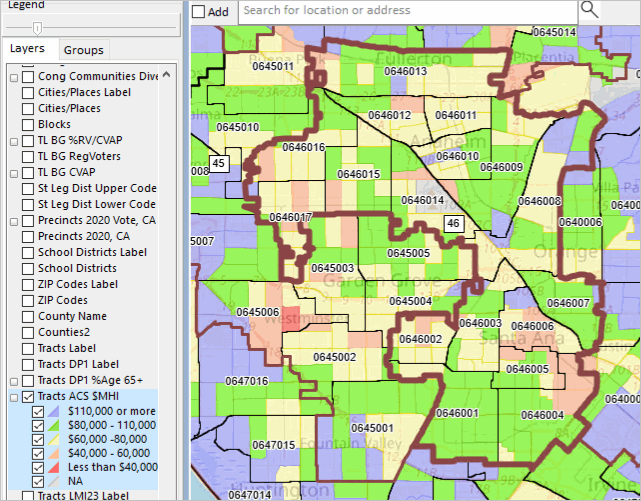
Drill-down View of Santa Ana area by Ward .. click for larger view
This zoom-in view shows Santa Ana wards as with red boundaries in context of other geography reviewed above.
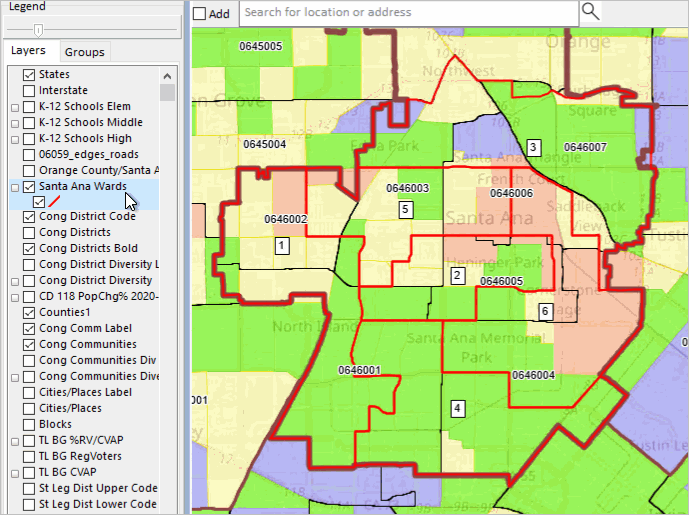
See Santa Ana ward boundaries using the official Santa Ana City website.
Citizen Voting Age Population by Block Group .. click for larger view
The following zoom-in view shows patterns of Citizen Voting Age Population (CVAP) by block group (BG) in the Santa Ana area in context of Congressional Community 0646005 (bold black boundary). Label shows total CVAP in that BG.
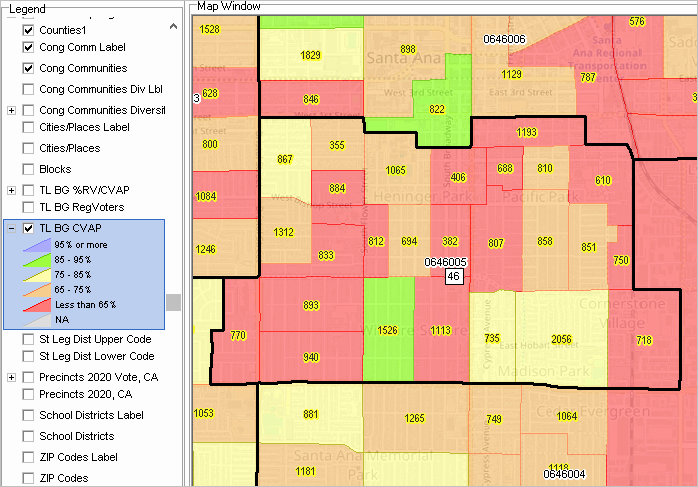
Drill-down View to Ward-CC-Block .. click for larger view
This zoom-in view shows one Santa Ana ward (red boundary) in context of census blocks (black boundaries) and related Congressional Community (gray bold boundary). Congressional Communities (CC) are geographic areas that nest within a Congressional District (CD), fully and exactly exhausting that CD area. CCs are comprised of a set of contiguous census blocks based on a range of criteria.
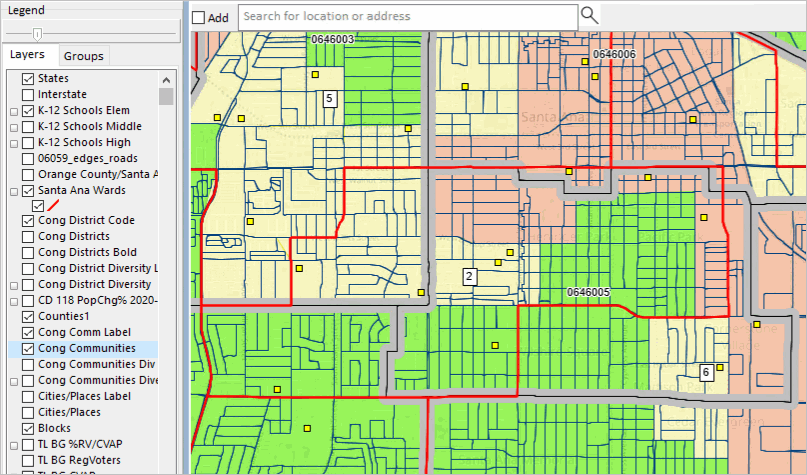
What’s Ahead
Updates on using VDA Desktop GIS will be included in forthcoming Blogs.
Don’t miss out! Click Follow in button at upper right.
About VDA GIS
Use VDA GIS tools to meet wide-ranging mapping needs and geospatial analysis. VDA Desktop GIS and VDA Web GIS have similar features that can be used separately or together. Each is a decision-making information resource designed to help stakeholders create and apply insight. VDA Web GIS is access/used with only a Web browser; nothing to install; GIS experience not required. VDA Desktop GIS is installed on a Windows computer and provides a broader range of capabilities compared to VDA Web GIS. VDA GIS resources have been developed and are maintained by Warren Glimpse, ProximityOne (Alexandria, VA) and Takashi Hamilton, Tsukasa Consulting (Osaka, Japan).
Data Analytics Web Sessions
Join us in the every Tuesday, Thursday Data Analytics Web Sessions. See how you can use VDA Web GIS and access different subject matter for related geography. Get your geographic, demographic, data access & use questions answered. Discuss applications with others.
About the Author
Warren Glimpse is former senior Census Bureau statistician responsible for national scope statistical programs and innovative data access and use operations. He is also the former associate director of the U.S. Office of Federal Statistical Policy and Standards for data access and use. He has more than 20 years of experience in the private sector developing data resources and tools for integration and analysis of geographic, demographic, economic and business data. Join Warren on LinkedIn.














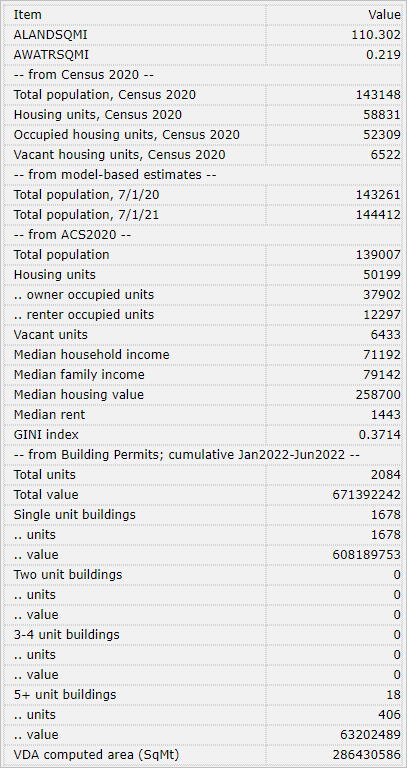










You must be logged in to post a comment.